Products reviews
Celestron NexStar 60 SLT (120 x 60mm) Telescope
$129.00 to $280.00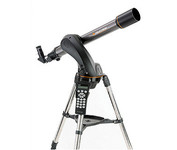
Our most affordable NexStar telescope turns starry nights into space odysseys. The 60mm refractors come with a fully computerized hand control with a database of over 4,000 celestial objects. With its pre-assembled, adjustable steel tripod, the NexStar 60 SLT can be up and ready to use in a matter of minutes
| MPN | 22076 |
| Optical Design | Refractor | Optical Diameter | 60 mm | Finderscope | Red-Dot | Focal Length | 700 mm | Max Useful Magnification | x 120 | Mount Type | Altazimuth | Motorized | Yes |
| UPC | 050234220767 |
Tags:
celestron, nexstar, 60, slt, 120, x, 60mm, telescope,Meade LightBridge 10 in. Deluxe (600 x 254mm) Telescope
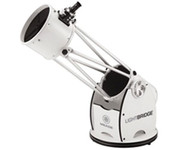
It's not just a big telescope. It's a big telescope that goes anywhere. New LightBridge truss-dobs from Meade take down and set up quickly. So you can take one of these massive windows on the universe out to your favorite dark sky locations with ease. LightBridge dobs give you high quality Meade optics, premium components, and ultra portability - all for about the same price as an ordinary tube dob. So get a LightBridge truss-dob. And prepare to cross the universe.Minimize
Meade NG-70 (140 x 70mm) Telescope
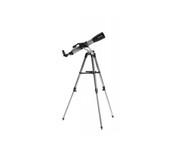
Recently upgraded from 60mm to 70mm aperature, Meade's NG70 telescope combines improved light-gathering ability with light-loss-reducing special optical coatings to produce noticeably sharper images of both celestial and terrestrial objects, making for a much better viewing experience. All the major planets except Pluto are clearly visible. The Moon stands out in near three-dimensional detail, revealing craters, mountain ranges, and fault lines. Dozens of external galaxies are visible; and, in our own Milky Way, this telescope displays hundreds of nebulae, star clusters, double and multiple stars, and variable stars.Minimize
Celestron PowerSeeker 70 EQ 21037 (35 x 70mm) Telescope
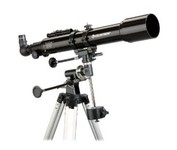
Celestron’s PowerSeekers include a full range of eyepieces plus a 3x Barlow lens that provides an increase in viewing power hundreds of times greater than that of the unaided eye!
Meade ETX-80BB (160 x 80mm) Telescope
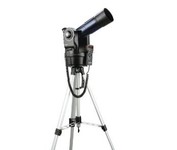
Observe the feather structure of an eagle from 50 yards or study the rings of Saturn from a distance of 800 million miles. Then focus beyond the solar system to the universe of nebulae, remote galaxies and ancient star clusters. It's an adventure of discovery the whole family can enjoy, in the backyard or wherever your travels take you.Minimize